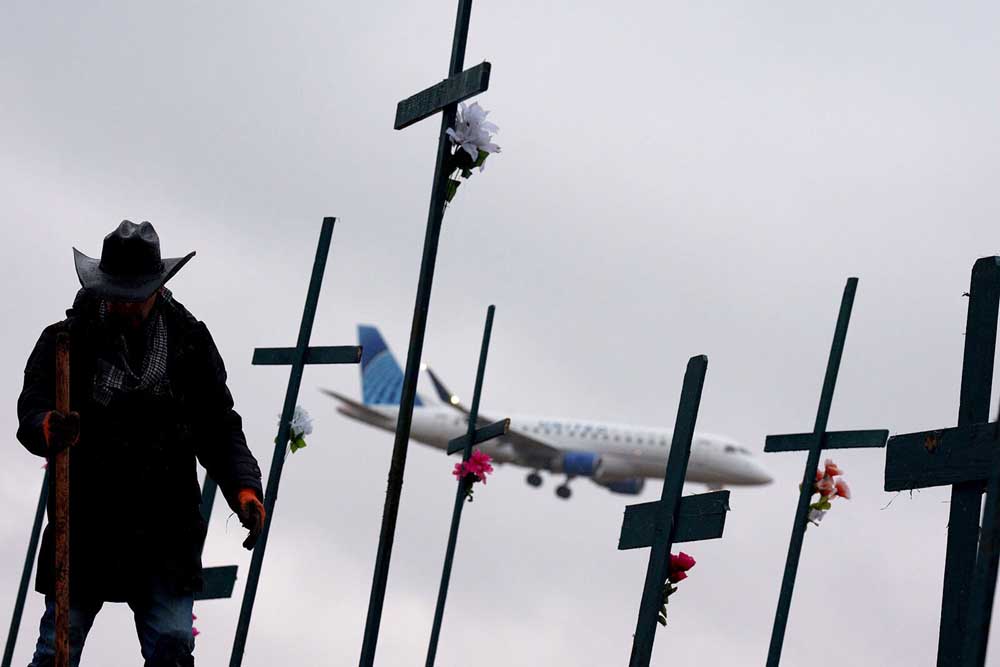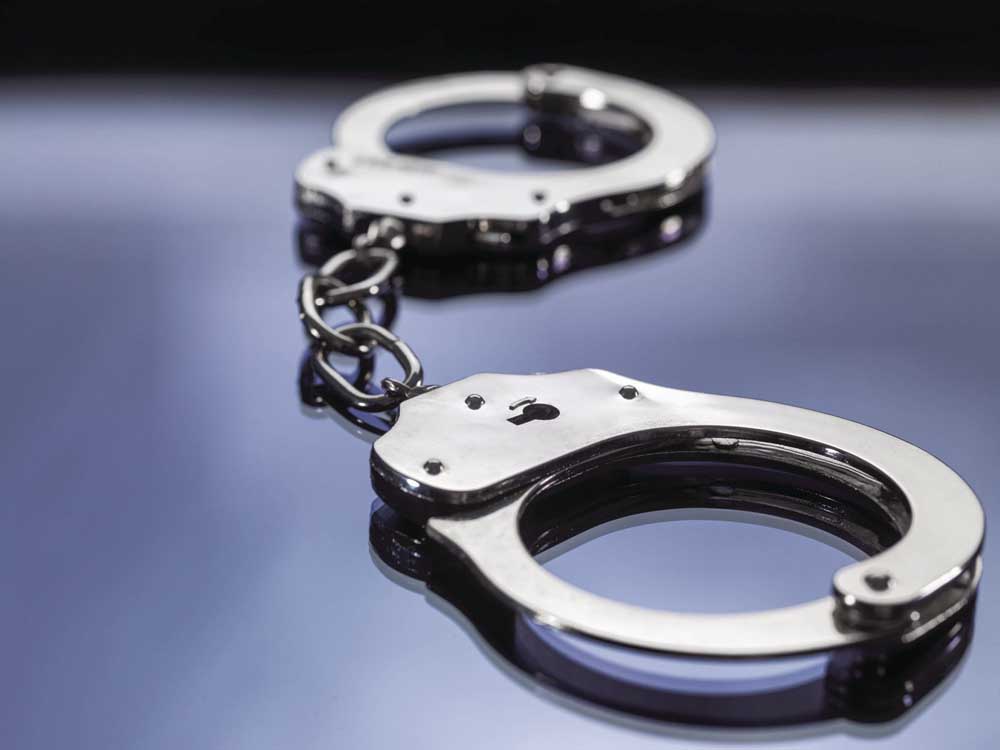Army helicopter’s altitude seen as factor in D.C. crash probe
Published 2:00 pm Friday, January 31, 2025

- An airplane lands Friday at Reagan National Airport in Arlington, Va., as Roberto Marquez from Dallas digs a hole for a cross as part of a memorial for the victims of the midair collision between an American Airlines plane and a military helicopter. (Andrew Harnik/Getty Images/TNS)
The flight path of an Army helicopter before it collided with an American Airlines Group Inc. passenger jet this week above Washington is emerging as a key line of inquiry in the probe of the midair tragedy that killed 67 people.
Investigators probing the accident have confirmed that the military aircraft was flying at an altitude above the upper limit for helicopters in the area near Ronald Reagan Washington International Airport, according to a person briefed on the matter.
Trending
Officials at the National Transportation Safety Board, which is leading the investigation, haven’t divulged any initial findings. But details are beginning to filter out, including about air-traffic control staffing levels in the tower Wednesday evening.
The Sikorsky H-60 Black Hawk helicopter carrying three military personnel was traveling between two dedicated flying zones, National Transportation Safety Board member J Todd Inman said at a briefing on Thursday evening.
While Inman didn’t go into detail, helicopters are limited to 200 feet in the area above the Potomac River where it encountered the passenger jet approaching to land. The Black Hawk was above that 200-foot limit at the time of the crash, the person who was briefed on the probe said.
The crash occurred at about 300 feet, according to aviation tracker FlightRadar24 — which would put it outside of the standard path for helicopters published by the FAA. Establishing the precise altitude at the moment of impact will depend on findings from the probe.
The Federal Aviation Administration closed routes near the airport indefinitely to helicopter traffic, the Associated Press reported on Friday.
In addition to the helicopter’s altitude, the controller in communication with the aircraft was performing the combined job of directing traffic for both planes and helicopters in the area, according to the person.
Trending
This isn’t unusual during a time of day or period where traffic isn’t as high, the person said. The New York Times reported earlier that one controller was performing both of those jobs.
“It’s probably not as unusual as you would think,” former Acting FAA Administrator Billy Nolen said in an interview with Bloomberg TV. “You have clear weather, you have night VFR, so visual flight rules. That gives you the ability for both the controllers and the pilots to be able to do some self separation if you will.”
Still, why there weren’t two controllers on duty at the moment of impact “will be part of the investigation itself,” Nolen said.
Inman and NTSB Chair Jennifer Homendy declined to speculate on the cause of Wednesday’s crash or initial findings, citing longstanding practices meant to shield disaster probes from outside influence.
The revelation about staffing, however, has fed into discussions about an ongoing shortage of air-traffic controllers. President Donald Trump and his aides have suggested that a focus on diversity and inclusion at the FAA has lowered standards and stood in the way of hiring qualified controllers.
Safety experts, on the other hand, have pointed to attrition, hiring disruptions caused by the Covid-19 pandemic and past government shutdowns as reasons for the shortage.
Trump has also weighed in on the helicopter’s flight path, saying in a post on his Truth Social network on Friday that the Black Hawk was “flying too high, by a lot.”
“It was far above the 200 foot limit. That’s not really too complicated to understand, is it???,” Trump wrote.
The President’s latest comments add to views that he and members of his administration have shared publicly on the possible causes of the crash, which ranks as the worst civil aviation disaster in the U.S. in decades. Trump said in a previous post shortly after the accident that the helicopter should have avoided the jet, which he said was on a “perfect” line of approach.
Defense Secretary Pete Hegseth has also suggested the helicopter was out of position.
“There was some sort of an elevation issue that we have immediately begun investigating at the [Defense Department] and Army level,” Hegseth said at a White House briefing on Thursday. In a separate video, he said he expected the probe “will quickly be able to determine whether the aircraft was in the corridor and at the right altitude at the time of the incident.”
The airspace around Reagan airport is among the most congested in the country. Complex rules govern military, private and commercial aviation activity surrounding the busy airport, which sits near the White House, the U.S. Capitol and the Pentagon.
Even a separation of as little as 200 feet between two aircraft “is not a lot,” Bruce Landsberg, former vice chairman of the NTSB, said in a Bloomberg TV interview on Friday. While he didn’t know whether the Army craft was outside its envelope, “I suspect that the helicopter routes have a prescribed altitude that is critical to adhere to,” he said.
Jeff Guzzetti, a former accident investigation chief for the FAA, said there are many unanswered questions that go beyond whether the military helicopter was at the proper altitude.
It’s unclear, for example, if its crew actually saw the regional jet, given the helicopter pilot communicated with the air-traffic controller that he saw the traffic, but perhaps wasn’t looking at the right aircraft, Guzzetti said.
The pilots on the helicopter were also wearing night-vision goggles, Hegseth said, devices that can affect peripheral vision.
“It could just come down to a failure to see and avoid,” Guzzetti said.






